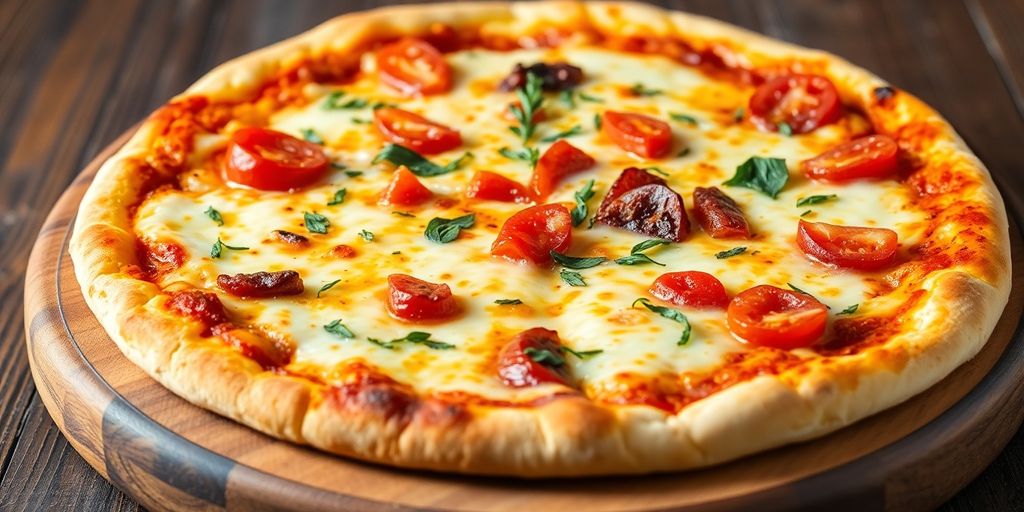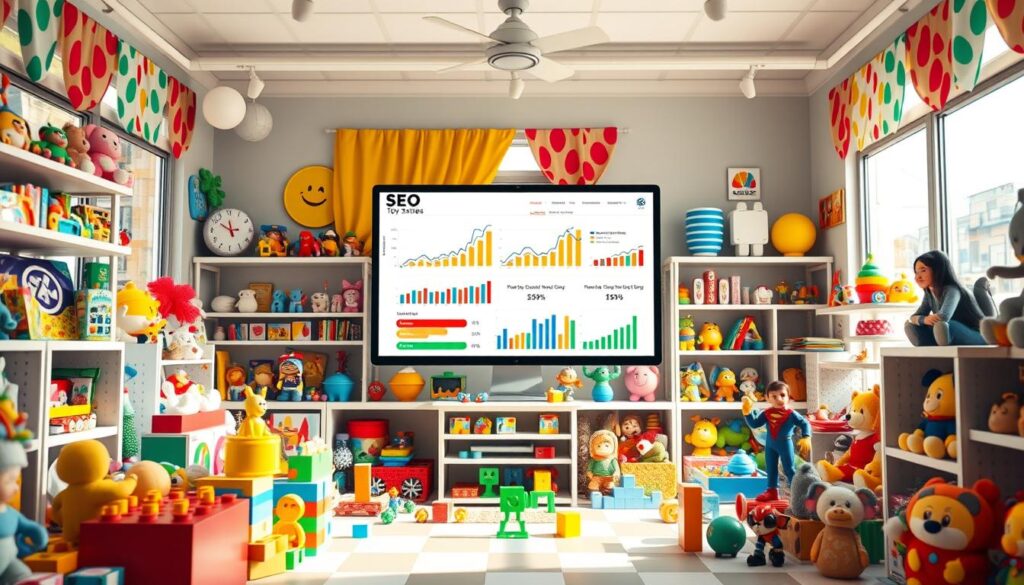Hey there, pizza lovers and pizzeria owners! Ever wondered how to get your pizza joint noticed online? That’s where SEO, or search engine optimization, comes into play. It’s all about making sure your pizzeria shows up when folks are searching for a slice in your area. Whether you’re new to this or just need a refresher, we’re diving into the world of SEO to help you boost your online presence. Let’s get started!
Key Takeaways
- SEO helps your pizzeria show up in local search results, bringing in more hungry customers.
- Claiming and optimizing your Google Business Profile is a must for local SEO.
- Using the right keywords on your website can make a big difference in search rankings.
- Creating engaging content like blogs and high-quality images can attract more visitors.
- Regularly monitor your SEO performance to keep improving and stay ahead.
Understanding SEO for Pizzerias

Defining SEO
Search Engine Optimization, or SEO, is the art of making your website more visible to search engines like Google. When someone searches for pizza places near me, you want your pizzeria to pop up at the top. SEO involves tweaking your website so that search engines understand what it’s about. This means using specific strategies to make sure your pages show up when people search for related terms. Think of it like setting up a signpost on the internet highway that directs hungry customers to your door.
Importance of SEO for Local Businesses
For a local business like a pizzeria, SEO is a game-changer. It helps you stand out in local searches, which are super important because most people look for nearby places when they’re hungry. If your pizzeria shows up in the top results, you’re more likely to get foot traffic and online orders. Here’s why it’s important:
- Visibility: More people will see your pizzeria when they search for pizza in your area.
- Credibility: Appearing at the top of search results makes your business seem more trustworthy.
- Traffic: More views often translate to more customers coming through your doors.
How Search Engines Work
Search engines use bots to crawl the web, gathering info about different pages. They then index this data and use algorithms to decide which pages to show in search results. These algorithms consider hundreds of factors, like how relevant your content is to the search term. To make sure your pizzeria shows up, you need to "speak the search engine’s language" by optimizing your content. This means using relevant keywords, ensuring your website is easy to navigate, and having quality content that answers the searcher’s query.
"For pizzerias, effective SEO strategies can turn casual online browsers into loyal customers. By focusing on local SEO, keyword optimization, and maintaining a strong online presence, pizzerias can significantly enhance their visibility and attract more diners."
Implementing these strategies can lead to increased online orders and customer engagement, ultimately transforming casual visitors into loyal patrons.
Focusing on Local SEO Strategies

Claiming Your Google Business Profile
To really shine in local searches, the first step is to claim your Google Business Profile. This is like your online business card. You need to make sure that all the details, like your address, phone number, and business hours, are accurate. This is crucial for appearing in local search results. Once you’ve claimed your profile, keep it updated with fresh photos and posts about your pizzeria. Engaging with customers through this platform can also help boost your visibility.
Optimizing for Local Keywords
When it comes to local SEO, keywords are your best friend. Think about what your customers might type into Google, like "best pizza in city" or "city pizza delivery." Use these phrases naturally on your website and in your content. Here’s a simple way to start:
- Identify 3-5 local keywords relevant to your pizzeria.
- Incorporate these keywords into your website copy, especially in headings and meta descriptions.
- Regularly update your content to reflect seasonal or promotional keywords.
Encouraging Customer Reviews
Reviews are gold in the world of SEO. They not only help improve your search rankings but also build trust with potential customers. Encourage your happy customers to leave positive reviews on Google. Responding to reviews, both good and bad, shows that you care about customer feedback. Here’s how you can encourage more reviews:
- Ask customers directly after a meal.
- Offer a small discount or freebie for leaving a review.
- Make it easy by providing a direct link to your review page.
Local SEO is all about being seen by the right people at the right time. By focusing on these strategies, your pizzeria can stand out in the crowded digital landscape.
Keyword Research and Selection
Identifying Relevant Keywords
Figuring out the right keywords is like finding the secret ingredient to your pizza sauce. You want to pick words that your customers use when they’re hungry and searching for a place to eat. Start by thinking about what makes your pizzeria special. Is it the wood-fired oven? The gluten-free crusts? Maybe it’s the late-night delivery. Write down these unique aspects, and then think about how your customers might search for them online. Understanding your audience’s search habits is key.
Using Tools for Keyword Research
Once you have a list of potential keywords, it’s time to see which ones are worth your time. Tools like Google Keyword Planner, Ahrefs, and SEMrush can show you how often these words are searched and how much competition there is. Long-tail keywords like "best vegan pizza in Brooklyn" can be easier to rank for and often attract more serious customers. Try to focus on a mix of broad and specific terms to cover all bases.
Implementing Keywords on Your Website
Now that you’ve got your keywords, sprinkle them throughout your website like parmesan on a pizza. Each page should have its own focus keyword. For example, your homepage might target "family-friendly pizza restaurant," while your menu page could focus on "gourmet pizza options." Make sure to include these keywords naturally in your text, headings, and even image descriptions. But don’t overdo it—Google’s smarter than you think, and keyword stuffing can actually hurt your rankings.
"Think of keyword research as a treasure map. Each keyword is a clue, leading potential customers right to your door. Get it right, and you’ll find your pizzeria bustling with new faces."
By following these steps, you’ll be on your way to mastering the effective keyword research criteria that will help your pizzeria stand out online.
Creating Engaging Content
Starting a Blog for Your Pizzeria
Starting a blog can be a game-changer for your pizzeria. It’s a space where you can share stories about your pizza-making process, introduce new menu items, or even talk about events happening in your area. Blogs help build a connection with your customers by giving them a peek behind the curtain. Plus, regularly updated content can boost your SEO. Consider writing posts like "The Secret to Our Dough" or "Why Our Sauce is the Best in Town." These topics not only engage readers but also naturally incorporate keywords that can help your site rank better.
Utilizing Visual Content
Visuals are super important. Think about it—when was the last time a mouthwatering picture of a pizza didn’t catch your eye? Use high-quality images of your dishes on your website and social media. Videos can also be a great tool. You could do a quick clip of your chef tossing dough or assembling a pizza. This kind of content is shareable and can reach a wider audience. Here’s a quick list of visual content ideas:
- Behind-the-scenes photos
- Short cooking videos
- Customer testimonials
Crafting High-Quality Menu Descriptions
Your menu is more than just a list of dishes; it’s a chance to entice customers. Descriptive and engaging menu descriptions can make a big difference. Instead of just listing "Margherita Pizza," try something like "Classic Margherita Pizza with fresh mozzarella, basil, and our signature tomato sauce." Use descriptive words that paint a picture and make the customer hungry. Remember, your menu should be easy to read and navigate, which also helps with user experience on your website.
"Content is the heart of your online presence. It tells your story and connects you with your audience in ways that are both meaningful and memorable."
Leveraging Social Media for SEO
Building a Social Media Presence
Creating a strong social media presence is key for any pizzeria looking to boost their SEO efforts. Start by setting up profiles on popular platforms like Instagram, Facebook, and Twitter. Each platform has its own vibe, so tailor your content accordingly. For instance, Instagram is all about visuals. Share mouth-watering photos of your pizzas, while Facebook can be used for more detailed posts about your pizzeria’s story or upcoming events. Consistency is crucial—post regularly to keep your audience engaged and your brand in their minds.
Engaging with Your Audience
Engagement is more than just posting content; it’s about interacting with your followers. Respond to comments, ask questions, and encourage discussions. This interaction not only builds a community around your brand but also increases your visibility on social media platforms. Consider running polls or contests to get your audience involved. When customers leave reviews or comments on platforms like Yelp or TripAdvisor, engaging with customer reviews can significantly enhance your online reputation and draw more patrons to your pizzeria.
Using Hashtags Effectively
Hashtags are like the breadcrumbs of social media—they help users find your content. Use relevant hashtags to make your posts discoverable to a wider audience. For a pizzeria, this could include hashtags like #PizzaLovers or #BestPizzaInTown. But don’t overdo it; 5 to 10 well-chosen hashtags per post can do wonders. Keep an eye on trending hashtags that you can relate to your content to potentially reach a larger audience.
Social media isn’t just a place for sharing photos; it’s a dynamic platform where you can connect with your audience and boost your pizzeria’s visibility. By actively engaging and using the right strategies, you can turn your social media channels into powerful tools for SEO.
Monitoring and Analyzing SEO Performance
Keeping tabs on your SEO efforts is like checking the oven while baking a pizza. You need to know if it’s cooking right, or if you need to tweak the temperature. Here’s how you can do it for your pizzeria’s SEO.
Using SERP Checkers
SERP checkers are your go-to tools for seeing how your pizzeria shows up in search engine results. These tools help you understand where you stand against competitors. They let you see the structure of search pages, like if there are featured snippets or local packs. By knowing this, you can adjust your strategy to snag more space on those pages.
Tracking Keyword Rankings
Keywords are like the secret sauce of SEO. You gotta know which ones are bringing in the traffic. Tools like Rank Tracker let you monitor how your keywords are doing. You can see if "best pizza in town" is working better than "pizza delivery near me." Regularly checking these rankings helps you tweak your keywords to keep the traffic flowing.
Assessing Backlink Profiles
Backlinks are like the word-of-mouth for your website. They tell search engines your site is worth visiting. The Backlink Checker tool is handy here. It shows you who’s linking to your site and if those links are solid. You can also spot new places to get backlinks, like local food blogs or community sites. Keeping your backlink profile healthy is key to maintaining a strong online presence.
In the digital world, monitoring your SEO is as vital as keeping an eye on your pizza oven. Without it, you might burn your chances of reaching hungry customers.
By keeping a close watch on these elements, you can ensure your SEO strategy is as tasty as your pizza, helping you attract more customers and keep them coming back for more.
Implementing Technical SEO Best Practices
Optimizing Website Speed
When it comes to technical SEO, one of the first things to look at is your website’s speed. A slow-loading site can turn potential customers away before they even see what you offer. Imagine waiting for a pizza delivery that never arrives—frustrating, right? That’s how users feel about slow websites. Here’s how you can boost your site’s speed:
- Minimize HTTP requests: The more elements (like images, scripts) on a page, the longer it takes to load.
- Compress images and files: Smaller files load faster.
- Use a Content Delivery Network (CDN): This helps distribute your content more efficiently.
Ensuring Mobile-Friendliness
With everyone glued to their phones, having a mobile-friendly site is not just nice-to-have; it’s a must. Google prioritizes mobile-friendly sites, and you don’t want to miss out on that traffic. Here’s what you can do:
- Use responsive design so your site adjusts to any screen size.
- Make sure buttons and links are easy to tap on smaller screens.
- Test your site on various devices to catch any issues.
A mobile-friendly site ensures that your customers have a smooth experience, whether they’re checking your menu or placing an order.
Conducting Regular Website Audits
Regular audits are like routine check-ups for your website. They help you spot and fix issues before they become big problems. Here’s a simple checklist:
- Check for broken links and fix them.
- Review your metadata to ensure it’s optimized.
- Analyze your site’s performance metrics regularly.
Implementing these technical SEO best practices can significantly improve your website’s performance and visibility. Remember, it’s about creating a seamless experience for your users while making sure search engines can easily understand and rank your site. For pizzerias, this could mean the difference between being the top choice or getting lost among the competition. If you’re looking for more ways to enhance your restaurant’s visibility, consider integrating these strategies with broader SEO efforts.
Conclusion
So, there you have it! SEO might sound like a big, scary term, but for pizzerias, it’s all about getting more folks to find you online. By focusing on local SEO, using the right keywords, and maybe even starting a blog, you can make sure your pizza place pops up when someone nearby is craving a slice. And don’t forget about social media—it might not directly boost your search ranking, but it sure helps get the word out. At the end of the day, a little effort in SEO can mean more customers walking through your door. So, why not give it a shot?
Frequently Asked Questions
What is SEO and why does it matter for pizzerias?
SEO, or Search Engine Optimization, is all about making your website more visible on search engines like Google. For pizzerias, it helps attract more local customers by showing up in search results when people look for pizza places nearby.
How do search engines decide which websites to show first?
Search engines use special programs called bots to look at websites and gather information. They use this info, along with many other factors, to decide which sites should appear first in search results.
What is local SEO and how is it different from regular SEO?
Local SEO focuses on making your business visible to people searching in your area. It’s especially important for pizzerias because it helps attract local customers, unlike regular SEO that targets a broader audience.
How can I improve my pizzeria’s local SEO?
You can improve local SEO by claiming your Google Business Profile, using local keywords on your website, and encouraging happy customers to leave reviews online.
Why are customer reviews important for SEO?
Customer reviews help build trust and credibility. They also play a role in local SEO, as search engines consider them when deciding how to rank your business in search results.
What are some easy ways to use keywords on my pizzeria’s website?
Use keywords in your page titles, headings, and throughout the text. Also, include them in the URL and meta descriptions to help search engines understand what your page is about.






